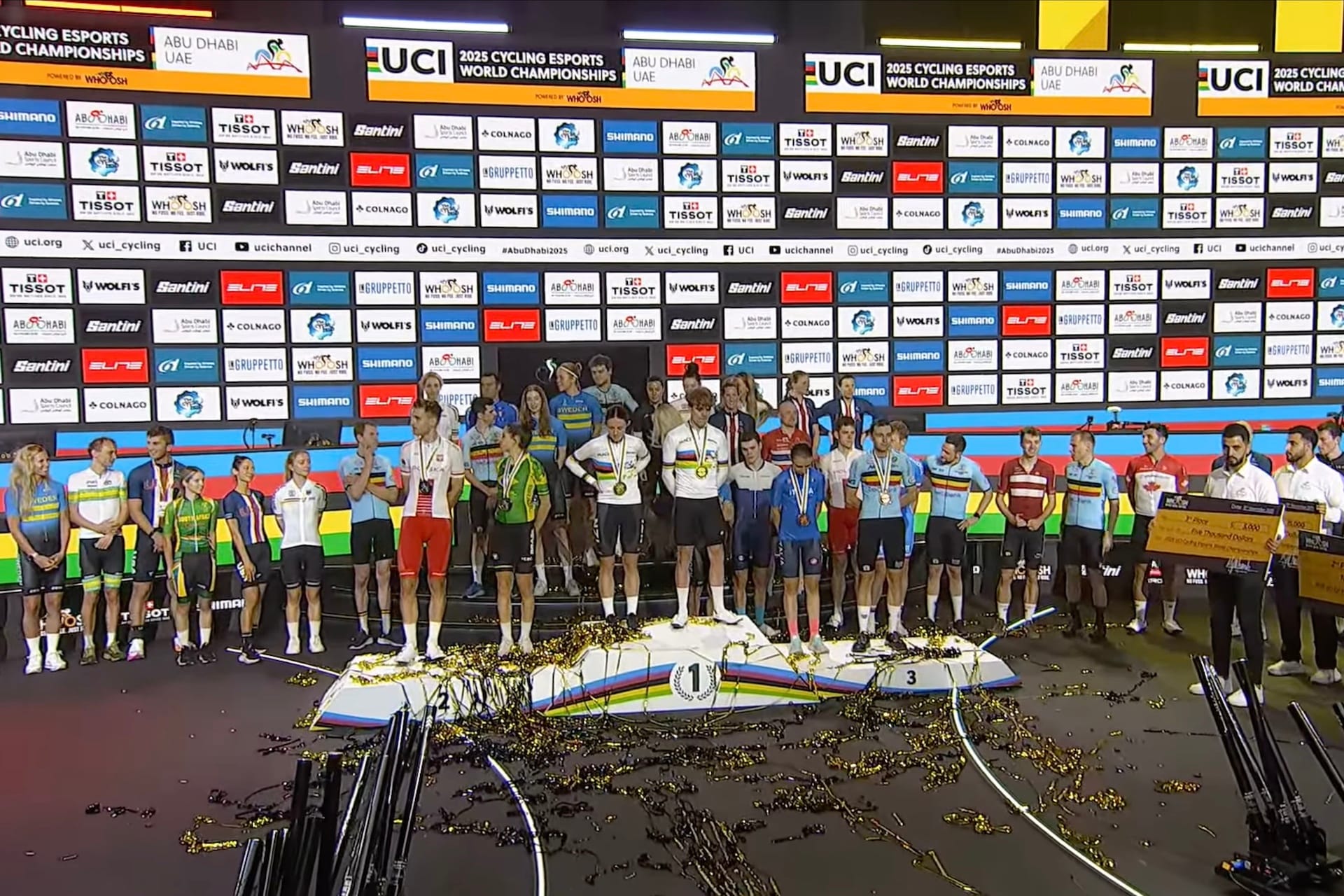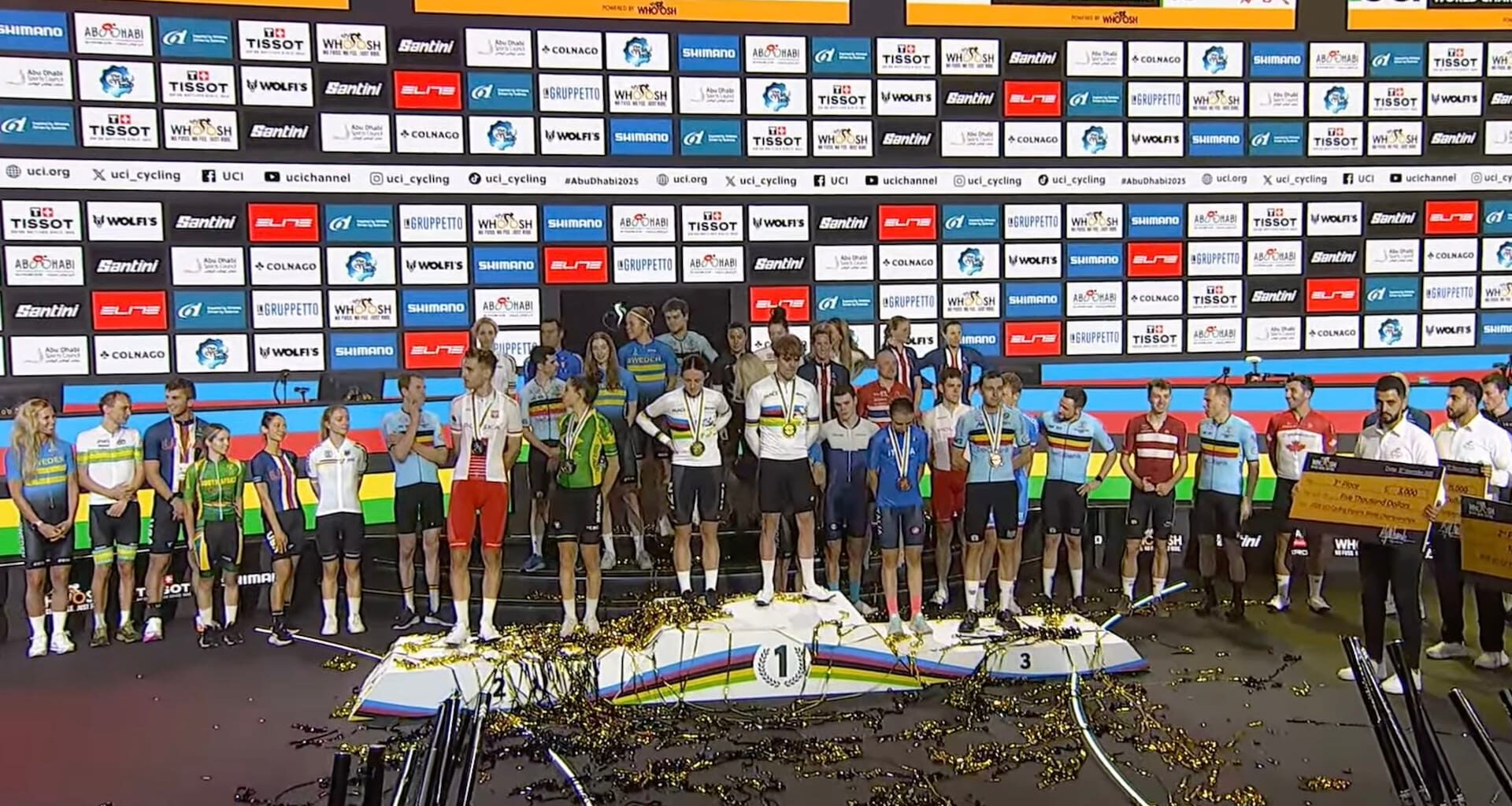
A sudden surge in YouTube views for the event is cause for concern. Is it a case of commercialism over credibility?

Hand raised. No one wants this to be real more than I do. But an almost 1,000% increase, year over year, from 48,900 to 528,000 views on MyWhoosh’s YouTube channel for the livestream of the World Championships, is cause for even the most apologetic evangelist to pause and question the veracity.
Has cycling esports finally become a viral sensation? The evidence paints a different, much more opaque picture that compromises principle for positive perception – potentially betraying the trust of the sport and its governing body in the process.
The 2025 UCI Cycling Esports World Championships were held this past weekend in Abu Dhabi. MyWhoosh, the UAE-based cycling esports platform partner for the UCI, livestreamed the event to its YouTube and Twitch channels. By most accounts, the approximately 2,200 concurrent (maximum) viewers watching the live action from home saw an intriguing and solid display of cycling esports racing.
The podium placements weren’t decided until the final meters of the three-stage omnium, and if you’re a fan of the discipline and its athletes, you can’t really ask for much more. The race format selected the best all-around esport racers in Germany’s Jason Osborne and Kiwi Kate McCarthy, who each successfully defended their world titles. Technical glitches impacted only a select few – one racer was a DNS in stage 3 after a computer crash – which is no small feat when considering the complexity of the setup.
 The mystery ingredient
The mystery ingredient
For the roughly 200 spectators inside the 3,000-seat Space42 arena, the live experience must have been spectacular. As in-venue commentator Anthony McCrossan put it, “UAE doesn’t do anything by halves.” MyWhoosh clearly proved that point, pouring immense financial and human resources into staging the event.
It was clear they aimed the spectacle at those inside the arena, with booming sound, jumbo screens, and a grand stage for the sport’s best athletes. For the people in the building, the show likely lived up to the billing. But for esports fans watching from home, the elephant in the room was impossible to ignore. Despite clear improvements, the broadcast still missed the mark in key areas.
The sport continues to struggle to find the right formula for connecting viewers to the athletes’ emotion, effort, and backstory. Even with assurances from MyWhoosh and UCI officials, much stayed the same.
The total runtime dropped from 6.5 hours to 5.5, yet only about two hours featured actual racing. Confusing camera angles, awkward avatar movement, action absent at pivotal points in the race, sparse storytelling, and lost leaderboards made for a broadcast that often lacked clarity and tension.
It was a live, in-person event with people watching on TV, when it might have served the sport better as a made-for-TV event with a live audience. The subdued venue atmosphere failed to carry through to the screen, which may explain why the broadcast mixed music under the commentary. Despite the challenges, the in-race play-by-play team did a deft job putting words to the action, and cutting down on the confusion.
To MyWhoosh’s credit, too, some elements did improve, and if delivering a captivating cycling-esports broadcast were easy, someone would have nailed it by now. Several virtual cycling platforms, including Zwift, have tried with mixed results. For each (somewhat nitpicky) critique, there were a myriad more positive enhancements.
The video in question.
The numbers don’t lie … or do they?
Still, when the YouTube livestream sat at roughly 17,000 views six hours after the race, 28,000 some 12 hours after that, and stayed that way after 24 hours, it became clear the broadcast hadn’t landed as hoped. And that’s when everything changed.
This post is for paying subscribers only
Subscribe now
Already have an account? Sign in
Did we do a good job with this story?
👍Yep
👎Nope
